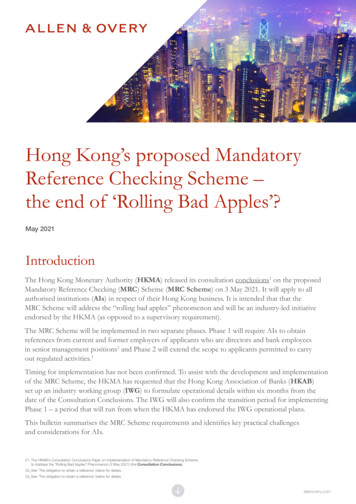
Transcription
Is Your PartNumberingScheme CostingYou Millions?Best Practices for Part NumberingWHITE PAPER
Is Your Part Numbering Scheme Costing You Millions?INTRODUCTIONToday’s manufacturers must create, manage, and track thousands of parts throughout thenew product development (NPD) process. Every time a new part is added to a company’slibrary, it can cost thousands of dollars to qualify, design, and roll out. That’s seriousmoney. And that’s why choosing the right part numbering scheme to reference your partsis critical to your success. Leveraging our experience implementing over 1,300 globalcustomers, we will discuss the various approaches, offer insights, and propose bestpractices to consider when setting up the optimal part numbering system.PART NUMBERING: AN OVERVIEWThere are two different types of numbering schemes to consider.Intelligent. This is a “significant” part numbering scheme where part numbers refer toinformation about each part (e.g., part type, product lines, parametric information). Forinstance, a resistor part may be assigned a number like RES-100-0003 where “RES”stands for resistor, “100” is the resistance value in ohms, and “0003” is a serialized suffix.Non-Intelligent. This refers to a “non-significant” part numbering scheme. Part numbersare simply assigned from a sequential, non-significant scheme. There is no referenceto part types, product lines, parametric, or other part details. Using this approach, aresistor might be assigned a part number 16782 and a capacitor might be 16783. Everysubsequent part is given the next part number in the sequence regardless of part type.02
Is Your Part Numbering Scheme Costing You Millions?It might be difficult to understand the consequences of each approach. You may evenask yourself why anyone would opt for a non-intelligent scheme. Each scheme offersadvantages and disadvantages. You will need to consider your company’s requirementsand goals, along with what type of system you have in place (manual, electronic, productlifecycle management, quality management system, etc.).Examples of Part Numbering SchemesIntelligentNon-IntelligentEVR - XXX - 123456 - eSequentialNumberRevisionEveryScan, US Model XL-2000Power Supply, USGasket, Screen, 3.5 inLabel, Safety, EveryScanCable, USB A/A, BlackEveryRoad, GPS, Model 5000INTELLIGENT PART NUMBERINGThe AdvantagesBecause intelligent part numbers impart meaning about the category, source, or intendeduse of the part, it’s easy for manufacturers to see the efficiencies that come with adoptingthis approach.Some benefits to an intelligent numbering scheme include:Better search efficiency. With intelligent numbering, you can group similar parts in yourdesign documentation or spreadsheets to search or filter by part number. You can also03
Is Your Part Numbering Scheme Costing You Millions?locate physical parts on the stockroom floormore efficiently, since it’s easy to see whereall the resistors are when they’re all labeledwith a part number starting with “RES.”Easier identification. Because intelligentnumbers specify part details, they provide aframe of reference for each part and makeit easier to find parts when a team memberdoesn’t have any information other than thepart number. For example, an engineer/technician can quickly verify whether a partmeets general functional requirements byreferencing the intelligent part number.The DisadvantagesWhile there are many benefits to using an intelligent part numbering scheme, there arealso shortcomings. For this type of system to work well in an organization, employeesmust be familiar with all of the different kinds of parts. Such a scheme also demandsongoing attention and can introduce delays in your processes.Training and reuse. Because each intelligent part number has meaning, ill-defined orincorrectly assigned parts can have costly consequences. Whoever assigns part numbersmust be well-trained in issuing parts from the part numbering log or sequence. Whenparts are incorrectly assigned, companies often have to create change orders (ECOs) justto correct the part number. In other cases, companies that issue part numbers referringto specific product lines must change part numbers later when additional product linesreuse the same part to show the part is common to more than one product line.Tribal knowledge required. Often, those working on the manufacturing shop floor don’thave enough knowledge of the part numbering schemes to be able to correctly decipherthe intelligent number. So, most users outside of engineering and document control willtreat the intelligent number as non-intelligent—which negates the benefits of havingintelligent part numbers in the first place.Difficult to maintain schemes. If you introduce a new part that doesn’t fit into your currentpart numbering scheme, you may need to reevaluate your entire scheme and definea new part type or category. All employees who use the system must understand andmaintain the logic of the part numbering system, and part group number ranges mustbe planned in advance. For example, if all the significant digits in a string (0-9) have beenused and you need to introduce an 11th part category into that group, what do you do?Bottleneck to issuing new parts. Because assigning an intelligent part number mayrequire time and discussion, a single person or group is sometimes given responsibilityfor part issuing and they can become a bottleneck. And each time you need to add a newparameter to your numbering scheme, you will have to go back and update the numbersfor all affiliated parts, dramatically decreasing the sustainability and effectiveness of yourpart numbering system.04
Is Your Part Numbering Scheme Costing You Millions?NON-INTELLIGENT PART NUMBERINGThe AdvantagesUsing a non-intelligent scheme involves significantly less initial planning, since partnumbers do not reference part details or characteristics. You don’t need to educate yourfull supply chain about what each number signifies, and you can ramp new employeesquickly without relying too heavily on any one person to maintain the system. Here are afew more benefits to non-intelligent numbering schemes:Quick and easy to issue new parts. It takes very little time to pull or issue a sequentialnumber, so assigning a part number is quick and easy. You don’t have to know anythingabout the part—unlike intelligent part numbering systems that often require theassignment to go through a specific person, or department, who knows how to issue partnumbers based on all rules and variants.Little training needed. If new employees join your organization, they’ll need little to notraining in order to learn, find, define, or issue part numbers.No single point of failure. With non-intelligent part numbering, you can have multiplepeople pulling part numbers, and your company can continue to run efficiently withoutrelying on trained people or teams.Simple maintenance. It’s easy to implement and maintain a non-intelligent scheme, sinceit’s essentially a sequential list.The DisadvantagesUsing a non-intelligent part numbering scheme isn’t without its disadvantages, but thereare fewer disadvantages if you have a system that can maintain parts and provide clarityaround the type of parts outside the part number itself.Inability to recognize part types (outside of systems). Your team members will not beable to identify what type of part they have simply by viewing a part number. However,relying on employees’ tribal knowledge as they come and go is dangerous because therewill always be different levels of understanding about parts numbers when they requireconstant education and memorization of schemes.Comparing Part Numbering SchemesAdvantagesIntelligentNon-Intelligent Intelligent searches by part numbers Easier to IDDisadvantages TrainingTribal knowledge requiredDifficult to maintain schemesQuick and easy to issue new partsLittle training needed to issue partsNo single point of failureSimple to maintain numberingcheckout processes Inability to recognize part typessimply via part numbers (assumeteam members have memorized partnumbering schemes correctly however).Bottleneck to issuing parts05
Is Your Part Numbering Scheme Costing You Millions?KEY CONSIDERATIONS WHEN SELECTINGYOUR PART NUMBERING SCHEMENow that we’ve walked through the advantages and disadvantages, it’s important toconsider your company’s use cases.Here are a few key questions to askwhen determining which part numberingapproach to take. What will you use part numbers for withinyour organization? Get feedback fromyour entire team (engineering, quality, operations, etc.). Is some level of intelligence required tosupport existing business processes?Can the intelligence be better providedvia a systematic approach that doesn’t relyon tribal knowledge and memory? Does your system provide the ability tocapture part characteristics? For instance,modern systems provide the ability tocreate ways to characterize the partwith descriptions, product lines, types,and other attributes which can be usedto search for and identify parts withoutknowing an intelligent part numberingscheme. Will part numbers be shared with suppliers and/or contract manufacturers, oracross different b usiness systems? If so, do the other systems have part numberingcharacter constraints? Will your current system support your part numbering needs? Can you maintain yourpart number system with your existing tool or solution? Is there a better way to manage part types or characteristics using intelligentsystems? If you’re looking for a product lifecycle management (PLM) or qualitymanagement system (QMS) solution to manage parts, assemblies, and other productinformation—determine whether the system can provide a better way to categorizeparts outside of the part number. If so, this will make it easier to create, maintain, andsearch for parts using other field attributes.Companies today understand that reliance on tribal knowledge is a risk to their business.Systems have become more intelligent and replaced the need to incorporate intelligenceinto part numbers themselves. Moving intelligence or part characteristics into intelligentfields provides a more accurate way for teams to find parts and avoid confusion andmistakes caused by human error.06
Is Your Part Numbering Scheme Costing You Millions?EFFECTIVE PART NUMBER CREATIONTo implement a part numbering scheme successfully, you must establish good processesfor generating part numbers with a system designed for that purpose.Whether you use an intelligent or non-intelligent part numbering scheme, it’s importantto make sure you do not duplicate part numbers or create the same part with two uniqueand different part numbers. Using the exact same part number for two entirely differentparts can cause serious problems such as delays on the manufacturing line, confusionover the bill of materials (BOM) record, and incorrect part ordering—all problems thatultimately impact your bottom line.And, using the same manufacturer’s or supplier’s part number, identified by referencingtwo different company part numbers, creates issues with accurate part reuse in designing,planning, procuring, and manufacturing.To avoid duplication issues like this, manufacturers have found a variety of ways tomanage their part numbering systems.Paper log record. This approach is manual and doesn’t allow for easy access acrossmultiple sites or distributed teams. With this method, one person (or department) istypically responsible for assigning part numbers to help prevent duplicate part numbercreation. However, this creates a bottleneck and a single point of failure that can slowdown a company’s ability to move quickly and get part numbers to teams exactly whenthey need them.Spreadsheets or programmable tools/databases. Using spreadsheets or homegrowntools and databases does reduce the opportunity for mistakes while keeping an onlinerecord of all part numbers. But these systems are disconnected from the rest of theproduct, quality, and manufacturing records and processes.Purpose-built solutions. PLM and QMS software solutions were designed to helpmanufacturing companies manage the entire product record and development processfrom early concept through design and manufacturing. These solutions were createdto ensure the entire product record is managed in a single system of truth (SSOT) toreduce confusion, manual data entry errors, and provide visibility and traceability withall impacted teams. These solutions were also designed to support intelligent or nonintelligent part numbering schemes. Best of all, today’s modern solutions are developedin the Cloud making it easy for distributed internal teams and supply chain partners tocollaborate.07
Is Your Part Numbering Scheme Costing You Millions?BEYOND PART NUMBERINGPLM and QMS systems enable manufacturersand suppliers to create, maintain, share, andcollaborate around the entire productEngineeringrecord. Products today are comprisedof complex electronics, software, andsensors making it critical to have asingle system for managing the entireproduct record.DocumentPurpose-built systems like ArenaPLM and Arena QMS help you createnew parts, assemblies (aka bills ofmaterials or BOMs), change orders(ECOs), quality records (CAPAs, CARs,SCARs, etc.), and nancePart assignment and management are aminor part of creating and releasing newQualityFieldServicesproducts to market. Arena provides connectedpart record details that link parts to past andpending revisions via ECOs. And, it provides connectedrelationships to all where-used assemblies via BOM management along with traceabilityto any outstanding quality issues.Teams can easily import mechanical, electrical, and software designs into PLM or QMSsystems and use business-ready integrations that are designed to help engineeringteams design and share their designs with other teams outside o f engineering.These systems provide for easy and automated part numbering (intelligent or nonintelligent schemes) that avoid reliance on tribal knowledge. Once created, all teams cansearch for and use the right parts at the right time without traditional issues caused bymanual paper-based numbering logs or homegrown siloed numbering databases.PURPOSE-BUILT SOLUTIONSARE FLEXIBLE AND SCALABLEThere is no one-size-fits-all approach to part numbering, so Arena offers purpose-builtsolutions that are flexible enough to handle intelligent or non-intelligent part numberingschemes. Whether you’re just getting started or are moving away from manual orhomegrown tools, Arena provides solutions, along with industry best practice expertise,for complex manufacturers to manage parts throughout the entire product developmentprocess.Arena’s cloud-based PLM and QMS solutions help complex product companies andtheir supply chains work together to design, produce, and deliver innovative productsfast. We enable product development and manufacturing teams to share product08
Is Your Part Numbering Scheme Costing You Millions?information, exchange ideas, and implement changes throughout the entire productlifecycle. Arena streamlines regulatory compliance for environmental directives (e.g.,RoHS, REACH, WEEE, Conflict Minerals), U.S. Food and Drug Administration (FDA)regulations, International Organization for Standardization (ISO), International Traffic inArms Regulations (ITAR), Export Administration Regulations (EAR), and other regulatoryinitiatives.Arena provides a comprehensive approach to introduce new products to marketwith fewer errors. With our proven solution, your teams can accelerate new productdevelopment while reducing expenses and increasing profitability to deliver productsthat change the world. To learn how we can help solve your part numbering requirementswhile streamlining your entire new product development and introduction process,contact us today.CONCLUSIONAs you’ve seen, selecting a part numbering scheme is truly one of the key strategicdecisions a manufacturer must make. We hope this overview has given you some food forthought, and that you’ll join the Arena community in our ongoing conversations about partnumbering and other manufacturing best practices.09
Copyright 2022 PTC, Inc. All Rights Reserved. www.ptc.com
training in order to learn, find, define, or issue part numbers. No single point of failure. With non-intelligent part numbering, you can have multiple people pulling part numbers, and your company can continue to run efficiently without relying on trained people or teams. Simple maintenance.
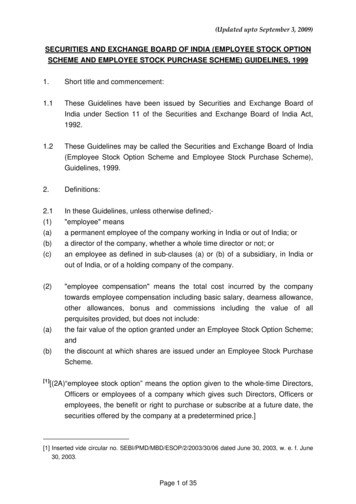
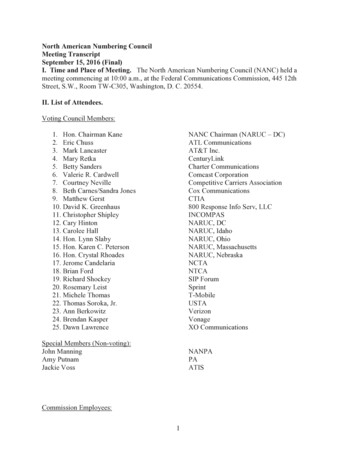
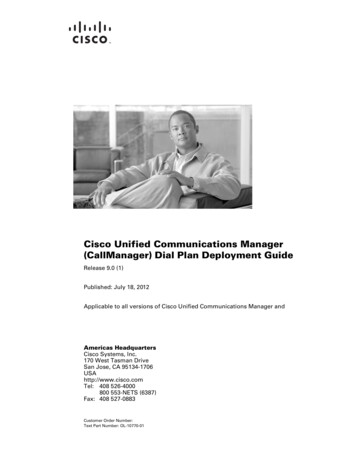
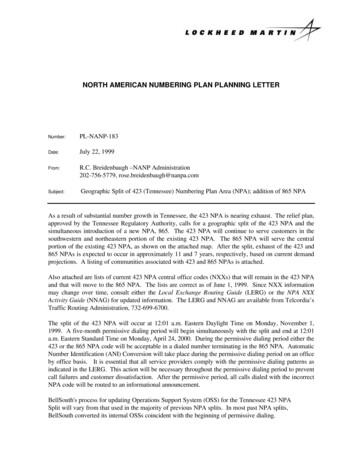



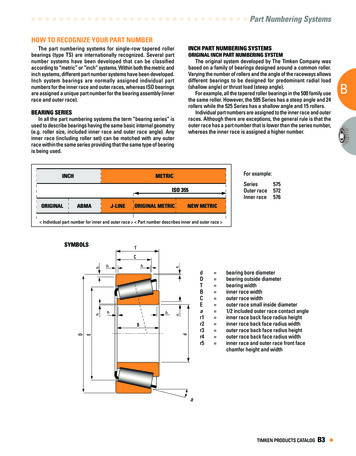
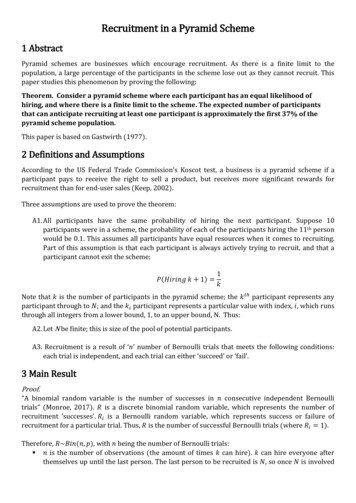
![[Title to come] DSP Dynamic Asset Allocation Fund](/img/24/dsp-dynamic-asset-allocation-fund.jpg)
